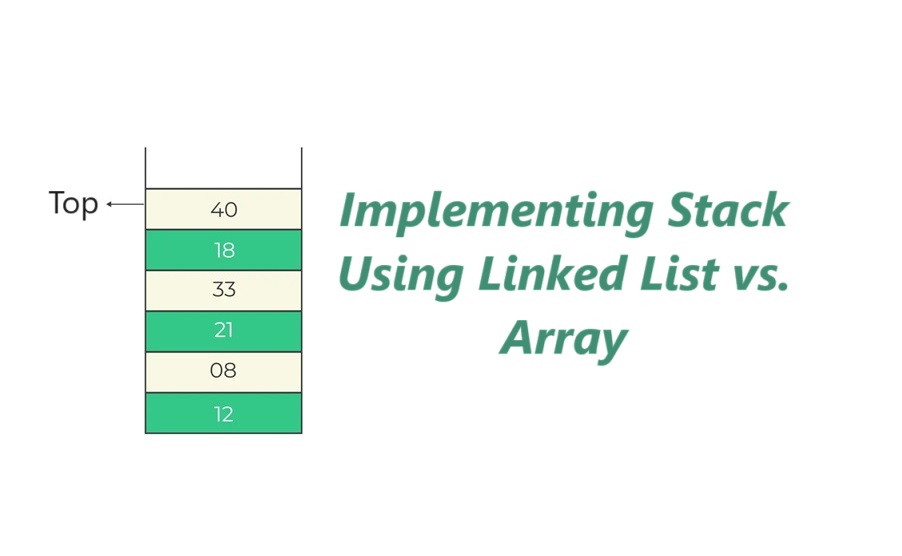A stack is a data structure that follows the Last-In-First-Out (LIFO) principle, where the last element added is the first one to be removed. Two common ways to implement a stack are using a linked list and an array. In this article, we will compare and contrast the implementation of a stack using linked lists and arrays, discussing their advantages and disadvantages.
Implementing a Stack Using Linked List
In a linked list implementation, each element of the stack is represented by a node. Each node contains the data and a reference to the next node in the stack. The top of the stack is represented by the head of the linked list.
Advantages:
- Dynamic Size: Linked lists allow for a dynamic size, meaning the stack can grow or shrink as needed without any predefined limit.
- Efficient Insertion and Deletion: Adding or removing an element from the top of the stack is efficient in a linked list implementation. It only requires updating the references of a few nodes, making it a constant time operation (O(1)).
Disadvantages:
- Extra Memory Overhead: Each node in the linked list requires additional memory to store the data and the reference to the next node. This can lead to higher memory usage compared to an array implementation.
- Slower Access Time: Accessing elements at a specific index in a linked list requires traversing the list from the head to the desired node. This results in a slower access time compared to an array, which allows direct access to elements using their index.
Let’s consider an example:
Implementing a Stack Using Array
In an array implementation, the stack is represented by a fixed-size array, where the top of the stack is indicated by a variable that points to the last inserted element.
Advantages:
- Direct Access: Arrays allow for direct access to elements using their index. This makes accessing elements at a specific position faster compared to a linked list.
- Lower Memory Overhead: Arrays have a lower memory overhead compared to linked lists since they do not require additional memory for storing references to other nodes.
Disadvantages:
- Fixed Size: Arrays have a fixed size, meaning the stack cannot grow beyond the initial size defined. If the stack exceeds the array’s size, it needs to be resized, which can be a costly operation.
- Inefficient Insertion and Deletion: Adding or removing an element from the middle of the array requires shifting all the subsequent elements, resulting in a time complexity of O(n).
Let’s consider an example:


Suggested: Unlocking the Power of Reverse Polish Notation (RPN) with Stacks
Conclusion
Both linked lists and arrays have their own advantages and disadvantages when it comes to implementing a stack.
Linked lists are more suitable when the size of the stack is not known in advance or when the stack needs to grow or shrink dynamically. They provide efficient insertion and deletion operations at the top of the stack. However, they have a higher memory overhead and slower access time compared to arrays.
Arrays, on the other hand, are more suitable when the size of the stack is fixed or known in advance. They allow for direct access to elements, resulting in faster access time. However, they have a fixed size and require shifting elements for insertion and deletion in the middle of the stack, making these operations less efficient.
Ultimately, the choice between implementing a stack using a linked list or an array depends on the specific requirements of the application and the trade-offs between dynamic size, memory usage, and access time.


